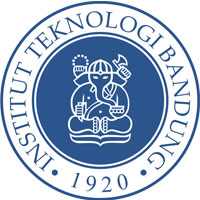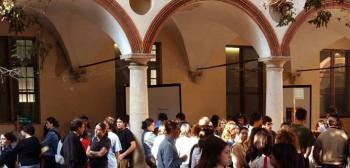万隆理工学院
About
Read more
Read less
Institut Teknologi Bandung (ITB), was founded on March 2, 1959. The present ITB main campus is the site of earlier engineering schools in Indonesia. Although these institutions of higher learning had their own individual characteristics and missions, they left influence on developments leading to the establishment of ITB. In 1920, Technische Hogeschool (TH) was established in Bandung, which for a short time, in the middle forties, became Kogyo Daigaku. Not long after the birth of the Republic of Indonesia in 1945, the campus housed the Technical Faculty (including a Fine Arts Department) of Universitas Indonesia, with the head office in Jakarta. In the early fifties, a. Faculty of Mathematics and Natural Sciences, also part of Universitas Indonesia, was established on the campus. In 1959, the present lnstitut Teknologi Bandung was founded by the Indonesian government as an institution of higher learning of science, technology, and fine arts, with a mission of education, research, and service to the community.Government Decree No. 155/2000 pertaining to The Decision on ITB as Legal Enterprise (Badan Hukum) has opened a new path for ITB to become autonomous. The status of autonomy implies a freedom for the institution to manage its own bussiness in an effective and efficient way, and to be fully responsible for the planning and implementation of all program and activity, and the quality control for the attainment of its institutional objective. The institution has also freedom in deciding their measures and taking calculated risks in facing tight competition and intense pressures.Bandung, with a population of approximately one and a half million, lies in the mountainous area of West Java, at an altitude of 770 meters. The ITB main campus, to the north of the town centre, and its other campuses, cover a total area of 770,000 square meters.
About
Institut Teknologi Bandung (ITB), was founded on March 2, 1959. The present ITB main campus is the site of earlier engineering schools in Indonesia. Although these institutions of higher learning had their own individual characteristics and missions, they left influence on developments leading to the establishment of ITB. In 1920, Technische Hogeschool (TH) was established in Bandung, which for a short time, in the middle forties, became Kogyo Daigaku. Not long after the birth of the Republic of Indonesia in 1945, the campus housed the Technical Faculty (including a Fine Arts Department) of Universitas Indonesia, with the head office in Jakarta. In the early fifties, a. Faculty of Mathematics and Natural Sciences, also part of Universitas Indonesia, was established on the campus. In 1959, the present lnstitut Teknologi Bandung was founded by the Indonesian government as an institution of higher learning of science, technology, and fine arts, with a mission of education, research, and service to the community.Government Decree No. 155/2000 pertaining to The Decision on ITB as Legal Enterprise (Badan Hukum) has opened a new path for ITB to become autonomous. The status of autonomy implies a freedom for the institution to manage its own bussiness in an effective and efficient way, and to be fully responsible for the planning and implementation of all program and activity, and the quality control for the attainment of its institutional objective. The institution has also freedom in deciding their measures and taking calculated risks in facing tight competition and intense pressures.Bandung, with a population of approximately one and a half million, lies in the mountainous area of West Java, at an altitude of 770 meters. The ITB main campus, to the north of the town centre, and its other campuses, cover a total area of 770,000 square meters.
University highlights
- 2012#451- 500
- 2014#461-470
- 2015#461-470
- 2016#431-440
- 2017#401-410
- 2018#=331
- 2019#=359
- 2020#=331
- 2021#313
- 2022#=303
- 2023#=235
- 2024#=281
- 2025#=256
- 2026#255
QS Stars is a rating system that helps you select the right university based on your
interests. It provides a detailed look at an institution, identifying which universities rate highest in
the
specific topics that matter to you, like facilities, graduate employability, social responsibility,
inclusiveness, and more.
Campus locations
Main Campus,
Jalan Ganesha 10 , Bandung , Jawa Barat , Indonesia , 40132
Jatinangor Campus,
Jalan Let. Jen. Purn. Dr. (HC). Mashudi N0.1/ Jl. Raya Jatinangor Km 20,75 , Sumedang , Jawa Barat , Indonesia , 45363
Similar Universities
K.Zhubanov Aktobe Regional State University
A.Moldagulova Prospect, 34, Aktobe
科阿韦拉州自治大学
Blvd. V. Carranza esquina González Lobo, Saltillo
Karlshochschule International University
Karlsstr. 36-38, Karlsruhe
索诺拉大学
Blvd. Luis Encinas y Rosales S/N, Hermosillo
蒙特雷音乐学院,蒙特雷校区
Eugenio Garza Lagüera & Rufino Tamayo, Monterrey
Related content
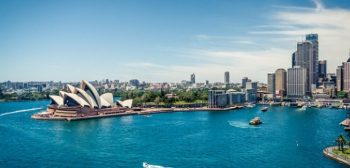
Studying Abroad in Australia…
Cat
Sargent
更新日期
404
21

来留学后你会爱上东京的13个理由
Stephanie
Lukins
更新日期
1.1k
26

Everything You Need to Know…
Craig
OCallaghan
更新日期
911
18
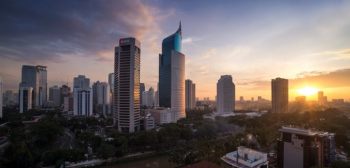
雅加达
Chloe
Lane
更新日期
392
0

International Scholarships f…
Laura
Tucker
更新日期
1k
20
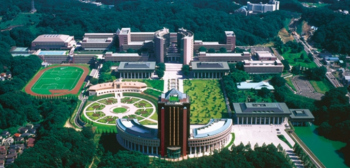
Top Universities in Asia for…
Laura
Tucker
更新日期
231
0

2024年QS最佳留学城市排名:今年有哪些新晋城市?
alexandru
Croitoru
更新日期
1.8k
0
Test preparations
Bandung Institute of Technology (ITB)
basic
10
no
1180
L
CN

